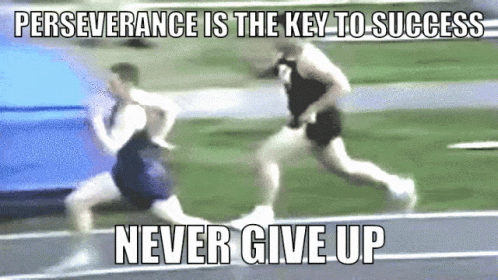Journal Prompt 236
Discover the art of bouncing back through Nelson Mandela's wisdom, personal growth strategies, and real-life applications. Join us on a journey of self-discovery and empowerment.

Happy Sunday Everyone. Like Maroon 5 said, the rain is definitely falling here in the Pacific Northwest 😅

This week, we're looking into the heart of resilience, a quality that's as challenging as it is rewarding. It's about the silent strength that pushes us to stand up after a fall, the inner voice that whispers, "Try again," when everything else screams, "Give up." Nelson Mandela, a man who embodied resilience like few others, once said,
"The greatest glory in living lies not in never falling, but in rising every time we fall."
This profound statement isn't just about physical falls; it's about the emotional and mental stumbles we all face. It's about the rejections, the failures, the heartaches, and the setbacks. But more importantly, it's about the courage to rise, to dust ourselves off, and to keep moving forward with more wisdom and strength than before. This week, let's dive deep into what it means to truly rise after falling, exploring the nuances of resilience, understanding its importance, and learning how we can cultivate this invaluable trait in our own lives. Let's begin this journey together, shall we?
Reflecting on Mandela's Wisdom: The Power of Resilience

Let's linger a moment on Mandela's profound words: "The greatest glory in living lies not in never falling, but in rising every time we fall." This isn't just a quote; it's a philosophy, a way of life. It speaks to the heart of human resilience, the core of our very spirit. It's about more than just getting back on your feet; it's about what we learn, how we adapt, and the way we carry those lessons forward.
Mandela's life was a testament to this belief. He faced unimaginable hardships and yet, his spirit remained unbroken. His words challenge us to look beyond the pain of our falls, to see the potential for growth and learning in every setback. It's a reminder that our failures are not the end of our story but crucial parts of our journey.
In our daily lives, this quote can serve as a beacon of hope and a source of strength. It's about embracing the messiness of life, acknowledging our imperfections, and understanding that every fall has the potential to lift us higher than we were before. It's a call to view each challenge not as a roadblock but as a stepping stone.
When we internalize Mandela's message, we start to see the world differently. Setbacks become opportunities; mistakes become lessons; and fear becomes a signal that we're moving beyond our comfort zones. This perspective shift can transform our lives, turning every fall into a foundation for future success.
So, as we move through this week, let's carry Mandela's words with us. Let them remind us that our greatest moments often come after our hardest falls. Let's rise, not just with the intention to stand again, but with the knowledge and insight gained from every stumble.
https://traveldaddy.beehiiv.com

Cultivating Personal Growth: Key Areas for Improvement
In our journey toward resilience, there are three pivotal areas where we can focus our energy to foster personal growth and strengthen our ability to bounce back from life's challenges. Let's dive into each one:
Building Resilience: The Heart of Bouncing Back
Resilience isn't something we're born with; it's something we build, like a muscle that strengthens with use. It's about developing a mindset that looks for solutions rather than dwelling on problems. To build resilience, start by setting small, achievable goals for yourself. Each time you accomplish one, you're not just ticking a box; you're proving to yourself that you can overcome obstacles. Additionally, practice mindfulness or meditation to help maintain a calm center in the storm of life's challenges. Remember, resilience is about how quickly you can recover from difficulties, not about avoiding them altogether.
Practicing Self-Compassion: Be Kind to Yourself
One of the toughest challenges we face in times of failure is being kind to ourselves. Yet, self-compassion is a critical component of resilience. Start by acknowledging your feelings without judgment when you're going through tough times. Speak to yourself as you would to a good friend who's struggling. Remind yourself that everyone makes mistakes and that each error is a step towards growth. Implementing daily affirmations can reinforce positive self-talk and help shift your internal narrative from one of criticism to one of support.

Embracing Adaptability: The Art of Pivoting
Life is unpredictable, and adaptability is key to navigating its uncertainties. Being adaptable means being open to finding new ways to tackle problems and being willing to adjust your approach when the first plan doesn’t work out. Encourage yourself to step out of your comfort zone regularly; this can be as simple as trying a new hobby or as significant as changing your approach to work. Each new experience builds your adaptability muscle, making you better equipped to handle change and bounce back from setbacks.
By focusing on these three areas, you can enhance your resilience and improve your ability to rise after falling. Remember, personal growth is a continuous journey, not a destination. Each step you take in building resilience, practicing self-compassion, and embracing adaptability is a step toward a stronger, more resilient you.
What I'm Listening To This Week
Abigail Shrier-JRE 2109
JRE #2109-Abigail Shrier: A Deep Dive into Resilience
In the realm of thought-provoking discussions, Joe Rogan's podcast episode #2109 with Abigail Shrier stands out, especially for those of us exploring the theme of resilience this week. Shrier, an independent journalist and author, delves into the intricacies of modern challenges, particularly those facing the younger generation, in her latest work, "Bad Therapy: Why the Kids Aren't Growing Up."
Understanding the Context: The Modern Struggle with Resilience
Shrier's insights provide a stark look at how societal shifts and the 'comfort crisis' are impacting our ability to deal with adversity. In a world where convenience is king, she argues, we're losing the valuable, albeit painful, lessons that come from facing and overcoming challenges. This conversation is a must-listen for anyone interested in understanding the broader societal factors that influence our personal development and resilience.
Key Takeaways: Lessons on Growth and Resilience
One of the most compelling aspects of Shrier's discussion with Rogan is her perspective on the necessity of hardship for growth. She suggests that by shielding ourselves—or our children—from every potential hardship, we inadvertently stifle the very experiences that foster resilience. This aligns closely with our exploration of rising after falling: the idea that it's through adversity, not in spite of it, that we grow stronger.
Applying Shrier's Insights to Personal Development
How can we use Shrier's observations to enhance our own resilience? First, by recognizing the value in challenges and viewing them as opportunities for growth rather than mere obstacles to avoid. Second, by stepping out of our comfort zones and encouraging others to do the same, thereby cultivating an environment where resilience can thrive. Lastly, by critically examining the societal norms and personal behaviors that may be hindering our ability to bounce back from setbacks.
Reflection and Discussion: Engaging with the Content
After listening to the episode, take some time to reflect on how Shrier's points resonate with your own experiences. Do you find that avoiding discomfort has limited your growth in any way? How can you apply the lessons from this podcast to overcome current challenges in your life? Engaging with these questions can provide valuable insights into your journey toward resilience.

Embracing the Challenge: A Week of Resilience Building
This week, I invite you to join me in a deliberate journey towards strengthening our resilience. It's not just about bouncing back from a recent setback; it's about embedding practices into our daily lives that fortify us for future challenges. Here’s how we can approach this:
Day 1: Acknowledge and Reflect
Start by acknowledging a recent challenge or setback you've faced. Write it down in detail, focusing on your feelings and reactions. Reflect on what happened and why it felt like a setback. This isn't about dwelling on the negative but about understanding and accepting your current state.
Day 2: Seek the Lesson
Every challenge has a lesson. Today, revisit your setback and try to find the silver lining. What did this experience teach you? How has it shaped your perspective? Writing down these lessons turns abstract ideas into tangible, actionable insights.
Day 3: Practice Gratitude
Resilience is closely linked to gratitude. Spend today identifying and writing down three things you're grateful for, especially in the context of recent challenges. Gratitude shifts your focus from what's missing to what's present, fostering a positive mindset.
Day 4: Set Small, Achievable Goals
Resilience grows in the soil of achievement. Set three small, achievable goals for yourself related to areas you want to improve. They should be specific, measurable, and time-bound. As you accomplish each goal, note how it makes you feel.
Day 5: Offer Kindness
Extend kindness to someone else. This could be a supportive message to a friend facing their own challenges or volunteering your time for a cause. Acts of kindness boost our own spirits and strengthen our support networks, key components of resilience.
Day 6: Embrace Discomfort
Step out of your comfort zone intentionally. This could be trying a new activity, initiating a difficult conversation, or tackling a task you've been avoiding. Note the feelings this brings up and how you deal with them.
Day 7: Reflect and Plan Forward
End the week by reflecting on your resilience journey. What did you learn about yourself? How have your thoughts and behaviors shifted? Based on this, outline a plan for how you'll approach future setbacks differently.
This week-long challenge is designed to build your resilience muscle through reflection, action, and planning. By consciously engaging with these practices, you're not just preparing to rise after a fall; you're equipping yourself to navigate life's ups and downs with grace and strength. Remember, resilience is a journey, not a destination. Let's embark on this path together, supporting each other along the way.
Broadening Perspectives: Additional Insights into Resilience
In our exploration of resilience, it's beneficial to integrate diverse perspectives and insights. This broader understanding can deepen our appreciation of resilience and provide us with more tools to cultivate it within ourselves.
The Science of Resilience: Understanding Our Biology
Did you know that our biological response to stress can actually be a foundation for building resilience? Research in neuroscience shows that exposure to manageable stress, much like muscle training, can help build our psychological resilience. This doesn't mean seeking out stress, but rather, understanding that when we navigate life's challenges successfully, our brain adapts, making us more equipped to handle future stress. Reflect on past situations where you've overcome adversity and consider how these might have strengthened your resilience.

Historical Examples of Resilience: Lessons from the Past
History is replete with individuals and communities that have demonstrated incredible resilience. From survivors of natural disasters to leaders like Malala Yousafzai and Mahatma Gandhi, there are countless stories of people facing unimaginable challenges and emerging stronger. Spend some time learning about a historical figure or event that exemplifies resilience. What can their story teach you about overcoming obstacles and persevering?
Cultural Dimensions of Resilience: A Global View
Resilience is not a one-size-fits-all concept; it varies greatly across different cultures and contexts. In some cultures, resilience is closely tied to community and collective support, while in others, it's more about individual perseverance and self-reliance. Exploring these different cultural perspectives on resilience can broaden your own understanding and appreciation of what it means to be resilient. Consider how your cultural background shapes your view of resilience and what you can learn from other cultures' approaches to overcoming adversity.
Integrating Mindfulness and Resilience: A Practical Approach
Mindfulness practices, such as meditation and mindful breathing, have been shown to enhance resilience by reducing stress and improving emotional regulation. By incorporating mindfulness into your daily routine, you can develop a more resilient mindset. Try starting with just five minutes of mindfulness practice each day and observe how it affects your response to daily stressors.

Reflecting on Personal Growth: Your Resilience Narrative
Finally, take some time to reflect on your own resilience journey. How have you grown from the challenges you've faced? What strategies have been most effective for you in bouncing back from setbacks? Writing down your resilience narrative can not only provide clarity and perspective but also serve as a reminder of your strength and growth.
By expanding our understanding of resilience through scientific research, historical examples, cultural perspectives, and personal reflection, we can better appreciate the complexity and richness of this vital trait. This holistic approach allows us to gather a variety of tools and strategies for building resilience, ensuring we're better prepared for whatever challenges lie ahead.
Broadening Perspectives: Additional Insights into Resilience
In our exploration of resilience, it's beneficial to integrate diverse perspectives and insights. This broader understanding can deepen our appreciation of resilience and provide us with more tools to cultivate it within ourselves.
The Science of Resilience: Understanding Our Biology
Did you know that our biological response to stress can actually be a foundation for building resilience? Research in neuroscience shows that exposure to manageable stress, much like muscle training, can help build our psychological resilience. This doesn't mean seeking out stress, but rather, understanding that when we navigate life's challenges successfully, our brain adapts, making us more equipped to handle future stress. Reflect on past situations where you've overcome adversity and consider how these might have strengthened your resilience.
Historical Examples of Resilience: Lessons from the Past
History is replete with individuals and communities that have demonstrated incredible resilience. From survivors of natural disasters to leaders like Malala Yousafzai and Mahatma Gandhi, there are countless stories of people facing unimaginable challenges and emerging stronger. Spend some time learning about a historical figure or event that exemplifies resilience. What can their story teach you about overcoming obstacles and persevering?
Cultural Dimensions of Resilience: A Global View
Resilience is not a one-size-fits-all concept; it varies greatly across different cultures and contexts. In some cultures, resilience is closely tied to community and collective support, while in others, it's more about individual perseverance and self-reliance. Exploring these different cultural perspectives on resilience can broaden your own understanding and appreciation of what it means to be resilient. Consider how your cultural background shapes your view of resilience and what you can learn from other cultures' approaches to overcoming adversity.
Integrating Mindfulness and Resilience: A Practical Approach
Mindfulness practices, such as meditation and mindful breathing, have been shown to enhance resilience by reducing stress and improving emotional regulation. By incorporating mindfulness into your daily routine, you can develop a more resilient mindset. Try starting with just five minutes of mindfulness practice each day and observe how it affects your response to daily stressors.
Reflecting on Personal Growth: Your Resilience Narrative
Finally, take some time to reflect on your own resilience journey. How have you grown from the challenges you've faced? What strategies have been most effective for you in bouncing back from setbacks? Writing down your resilience narrative can not only provide clarity and perspective but also serve as a reminder of your strength and growth.
By expanding our understanding of resilience through scientific research, historical examples, cultural perspectives, and personal reflection, we can better appreciate the complexity and richness of this vital trait. This holistic approach allows us to gather a variety of tools and strategies for building resilience, ensuring we're better prepared for whatever challenges lie ahead.
Embracing the Journey of Resilience
As we wrap up this week's exploration of resilience, it's clear that this isn't just a topic to be read and forgotten. It's a continuous journey, an ongoing process that weaves through the very fabric of our lives. Reflecting on Nelson Mandela's wisdom and the various insights we've delved into, we see that resilience is much more than a buzzword—it's a lifeline, a beacon of hope during tough times, and a guidepost for personal growth.
I encourage you to keep the conversation going—share your stories of resilience with friends, family, or here in the comments. Your journey could be the very thing that inspires someone else to rise after a fall. And remember, you're not alone on this path. We're all navigating the ups and downs of life, and there's immense power in sharing our experiences and supporting each other.
Thank you for joining me on this journey of exploration and growth. Here's to rising, time and time again, fortified by the knowledge that in the art of falling and rising, we discover our true strength.
With all my heart,
Your Friend, Austin ❤✌
You might be reading this but if you're not subscribed you could be missing out on exclusive content and other articles just like these. So please Leave a thumbs up, subscribe and i'll catch you on the next one! ✌🏻
Check Out All The Gear I Use For My Daily Journaling And WorkFlow
My Everyday Leather notebook Folio 📔
My Current Favorite Personal Journal 📚
The Every Day Carry Brass Pen 🖊️
How I listen to all my podcasts and books🎧
How I write all of the content I deliver to you beautiful people. 💻
Where I get all of my Audio Books 📚
Until Our Next Rendezvous
With all my heart,
Your Friend, Austin ❤✌
P.S. Many of you asked how you can help support this journaling movement, the most helpful thing you can do is leave a thumbs up 👍 leave a comment 💬 and share this post with your friends and family who might also find this topic interesting. Also Follow me on X formerly twitter @AmelioratingMan As this continues to grow I plan to add some kind of referral program to reward your support and I am also currently working behind the scenes on some exciting projects and giveaways for you all so stay tuned for that. Thank you all so much! Happy journaling! ♥
p. ps: I recently partnered with Amazon's affiliate program so any link provided on this post or any other place on my site that you may click on and make a purchase I will receive a small commission. I personally select what products are featured on here and I will never recommend anything I don't already use myself. Thank you all for the continued love and support.


